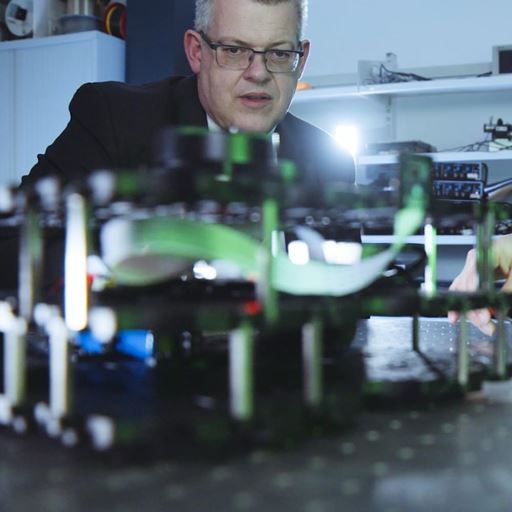Making robots survive longer in radioactive environments
-
Date
Tue 18 May 21

Computer scientists at the University of Essex have secured more funding to continue important research into making robots survive longer in radioactive environments.
Essex is part of the National Centre for Nuclear Robotics (NCNR) consortium which is developing state-of-the-art technology to solve the problem of nuclear waste and has now secured a further £600,000 funding to continue their research.
Scientists at Essex’s School of Computer Science and Electronic Engineering have already uncovered a new perspective on artificial intelligence (AI) and machine learning which could make robots more resilient than ever before. The Essex team, led by Professor Klaus McDonald-Maier will continue their research into extending the lifetime and increasing reliability of robot sensors and control systems in radioactive environments.
Cleaning up the UK’s 4.9 million tonnes of nuclear waste is the largest and most complex environmental remediation task in the whole of Europe. Much of this work must be done by robots because the materials are too hazardous for humans, however, many of the necessary robotic solutions have not yet been developed.
Other ongoing research by the Essex NCNR team involves working on new robot vision algorithms for localisation, mapping and perception capabilities in nuclear environments.
“So far, we have experimentally investigated how sensors and associated chips and software deteriorate with radiation exposure, and have developed new ways of modelling this degradation to predict sensor performance at different radiation dose rates, which is extremely important for building future systems,” explained Professor McDonald-Maier.
“Although our focus has been on the nuclear domain, our research has developed fundamental robotics, embedded systems and AI capabilities that are applicable across other extreme areas such as offshore environments, in space and mining. With additional applications possible, such as bomb disposal, firefighting and rescue robotics, this research will remain relevant for decades to come.”
As well as decommissioning legacy nuclear sites, robotic systems will play an increasingly important role in in-service maintenance and inspection of the UK’s current fleet of operating nuclear power stations. Robots will also be an essential element in the design of new-build reactors. The nuclear industry is increasingly keen to embrace advanced robotics technologies, to make complex operations, in hazardous environments, safer, faster and cheaper.
Essex is well known for its embedded systems, robotics and AI research. It has world-leading experts in these domains and the NCNR has helped Essex establish itself further as a leading institution in these areas.
During this project Essex researchers have performed cutting-edge research over the last three and a half years by measuring degradation of different sensors, and their associated electronics and software under a variety of radiation types and doses, and have used this data to develop new models for predicting sensor degradation. They have also developed new methods for software and embedded hardware design, which overcome radiation damage by incorporating new approaches to redundancy, resilience, and fault detection/tolerance/recovery into remote sensors.
Professor McDonald-Maier added: “We are extremely pleased to receive this additional funding for EPSRC National Centre for Nuclear Robotics that will enable us to build on our earlier achievements in visual place recognition computer vision techniques and resilient electronic systems and deliver both impact for extreme environments applications as well as important emerging technologies such as self-driving vehicles.”
NCNR, led by the University of Birmingham, is co-funded by the Engineering and Physical Sciences Research Council, research institutions, industrial collaborators and investment partners.
.jpg?mh=500&mw=500&hash=6568B6C9CCF5290A596BEF6678B6AD0E)



